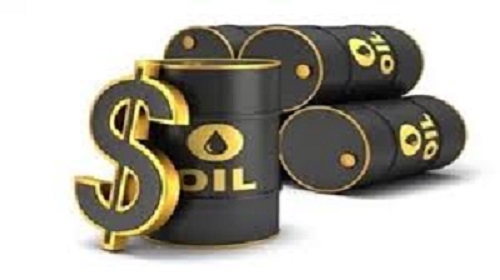Oil prices have been projected to hit $120 by the end of this year as they are expected to amass some 40 per cent increase from its recent levels. This is despite the crude losing more than 8 per cent of its prices this month.
But further gains in oil prices are threatened by the strength of the United States dollar, which appears to be an obstacle to the fortunes of the crude.
According to a report published by MarketWatch, a subsidiary of Dow Jones & Company, investors have been put on notice of the possibilities of the oil prices shooting up to $120 before the end of the year. Dow Jones & Company is a property of News Corp, which also owns The Wall Street Journal.
“This is a tight market. Supply and demand are close,” Matt Badiali, senior research analyst at Banyan Hill was quoted to have said. Global oil demand is expected to average 99.1 million barrels a day this year, but global oil supply stood at 98.8 million barrels a day in June, according to the International Energy Agency.
“We have supply constraints, thanks to Venezuela becoming a failed state. We have potential supply disruption with the Iran sanctions, and we have demand increasing with global growth,” Badiali noted. “Disappointment that (the Organization of the Petroleum Exporting Countries) didn’t just open the spigots” on production also supports a higher oil price.
Only last Wednesday, crude oil prices rose for a second day after data showed US crude inventories fell more than expected, easing worries about oversupply that have dogged the oil market in recent weeks.
Following the drop in the US inventories, the global benchmark Brent crude rose by 40 cents, or 0.55 per cent, from 73.43 per barrel to $73.84 per barrel, after gaining 0.5 per cent on Tuesday.
The US West Texas Intermediate (WTI) crude also rose by 20 cents, from 68.52 to $68.72, having risen nearly one per cent in the previous session.
OPEC, along with non-member allies including Russia, last month struck a deal to curtail some of its production cuts, to the extent that they would increase output by one million barrels a day. The move, in a way, was meant to offset supply losses tied to economic woes in Venezuela, disruptions in Libya, and renewed U.S. sanctions on Iran.
However, the decision by major oil producers to lift output didn’t cause a drop in prices—instead, they climbed shortly after the decision, with U.S. benchmark West Texas Intermediate crude futures on June 29 settling at $74.15, their highest since November 2014.
The production increase “wasn’t enough has developed over the last year and a half,” said Leigh Goehring to close the gap between demand and supply that, managing partner at Goehring & Rozencwajg, a research house focused on natural resources. It has been roughly 18 months since OPEC and its allies implemented a pact to cut production.
Following the return of some Libyan production earlier this month, oil prices began to move sharply lower, pushing global Brent crude on July 16 to a three-month low of $71.84. Adding further downward pressure, a U.S. official suggested that the U.S. would issue some waivers for U.S. sanctions on Iranian oil; U.S.-Chinese trade tensions mounted, raising concerns about a drop in oil demand; and there was talk of a possible release of oil from the U.S. Strategic Petroleum Reserve.
Recent tweets from President Donald Trump had also called for Saudi officials to pump more crude and lower prices. It’s “very new and very unusual for a sitting president to be able to…comment on OPEC or oil prices to a degree where we see his tweets have an actual impact on the price” of oil, said James Bambino, managing director of the Oilgram Price Report at S&P Global Platts.
But the most important factors influencing prices are supply and demand, he pointed out. The market may see a fall of $10 because of the tweets, but part of that drop would be attributable to “indications that foreign policy will have a longstanding impact on supply-and-demand factors,” said Bambino.
The IEA forecasts that global oil demand will grow to 100.5 million barrels a day in 2019, from 99.1 million this year.
Goehring argues that Saudi Arabia, OPEC’s biggest producer, has little spare capacity to make up for inventory losses elsewhere. It’s capable of pumping about 10.6 million barrels a day, just above current output of 10.3 million barrels a day, he said.
Global oil inventories may decline early in the fourth quarter “to levels that have historically seen triple-digit oil prices,” said Goehring. He believed that Brent oil prices will reach $100 a barrel this year. That has been his forecast for 18 months.
However, the bull run is threatened with the strength being gathered by the United States dollar.
According to reports, President Trump’s trade war with China, which is still in its early stages, had already battered the yuan.
The dollar has gained more than 8 percent against the Chinese currency since March. Reuters pointed out, that in dollar terms, the price of Brent oil had climbed 9 per cent this year, but in yuan terms oil is now nearly 14 percent more expensive.
But the yuan is not the only currency that has been knocked down a peg or two by the greenback.
The U.S. dollar index is at its strongest in a year, pushed along by steady rate tightening from the U.S. Federal Reserve and solid GDP growth.
There is a bit of a feedback effect at hand as well. As the Fed tightens rates and pushes up the dollar, emerging market currencies suffer from sudden shocks, sometimes severe. Argentina, Brazil, Turkey and South Africa have seen significant depreciations in their currencies this year. As capital flees some of these emerging markets and flows into safe haven assets, such as the U.S. dollar, it only magnifies the divergence between the greenback and other currencies.
















